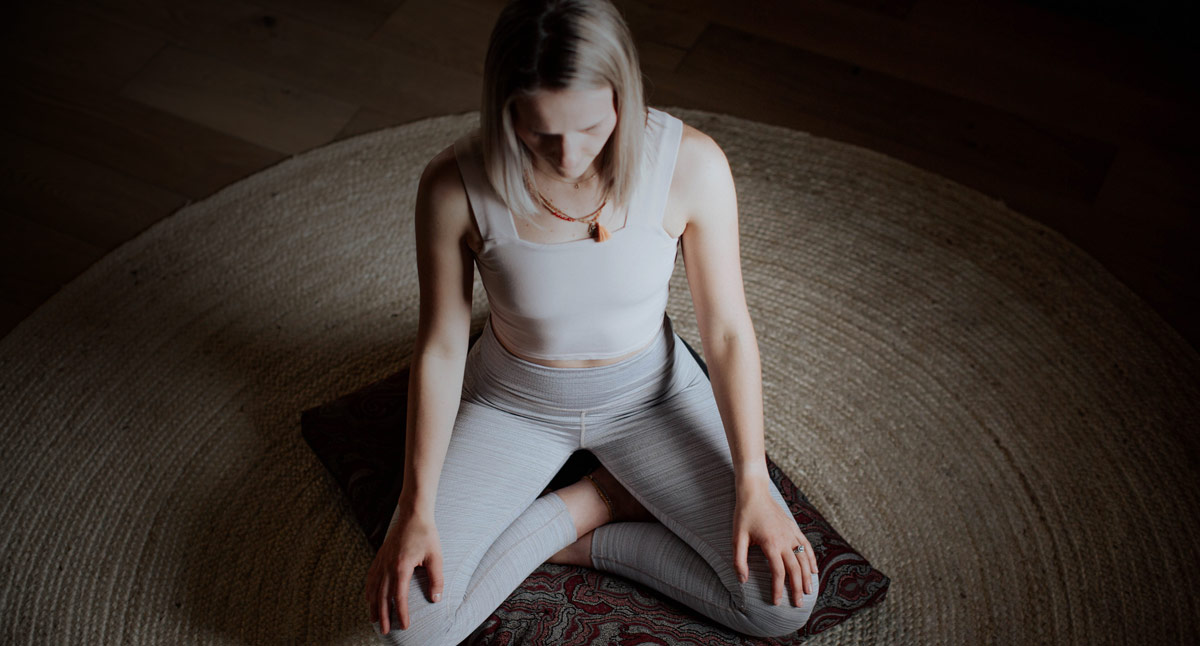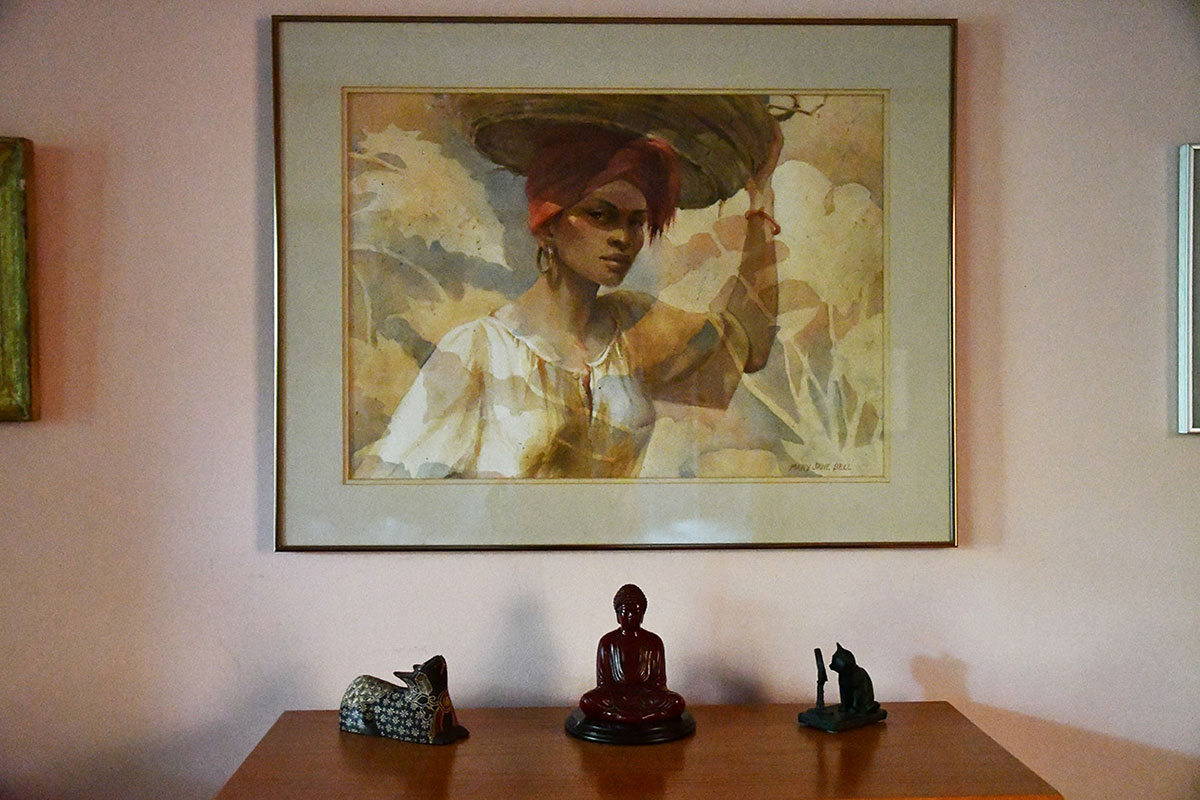
Every July since 2014, my life partner and I have attended an 18-day metta/insight meditation retreat at Spirit Rock Meditation Center. We signed up again last February, but well, we all know what happened in March 2020.
Like so many traditions, including my annual trip to the Telluride Bluegrass Festival, the meditation retreat was not to be. The retreat has become a touchstone for my partner and me. It’s a time to take a holiday from our daily routines and to take a much-needed computer and news break. But there is simply no way Spirit Rock could guarantee safety for the usual 100-plus attendees.
After the cancellation, I spent a few weeks in disappointment. Then my partner had an idea. Why don’t we do our own retreat at home?
Why not? Well, first I questioned whether we would be able to keep to the rigorous daily schedule—eight sitting practices alternating with seven walking sessions—without the incentive of practicing with a group. Also, we wouldn’t have a chance to talk with teachers if we hit a snag. But still, the thought was intriguing. So we made a commitment to do an 11-day silent meditation retreat, together, using my living room as the meditation space.
We moved some furniture and set up our meditation cushions, where we left them for the duration. We picked our “greatest hits” of meditation instructions and dharma talks from past retreats to listen to morning and evening. And I made a detailed plan for a substantial midday meal each day. We were on our own for the other meals.
How’s a Self Meditation Retreat Different?
As with everything, there were benefits to practicing at home, along with things that were more challenging. Some aspects had a little of both. Here are some of the things I learned:
- The entry and exit were smoother than what I usually experience when I go away for retreat. Preparing to leave home for a longish retreat is no small task. You have to anticipate all life’s details that have potential to cause mental drama in your practice. For example, I pay bills in advance, line up cat sitters, make sure my garden will be able to survive the July heat, line up a friend to toss the majority of my incoming emails, get way ahead on my writing and editing jobs, etc. Inevitably, the weeks before leaving are frenzied. That frenzy is very apparent in my body in the early days of a retreat. Because my prep responsibilities were so much less this time around, I didn’t experience the usual physical restlessness. Also, at the end, I didn’t have to negotiate a crowded airport. I was already home.
- I really enjoy cooking, but I also REALLY appreciate when others carry that mental workload. The mental energy I needed to expend—figuring out what to do when, which meditations I’d have to miss or cut short, etc.—made me so grateful for all the work that gets done behind the scenes at the center. Walking into the dining hall and enjoying a delicious, healthy meal that I didn’t have to plan is a joy. Still, incorporating meal-making into a meditation retreat was an invitation to practice mindful living.
- Just one day of meditation makes a difference. Marcel Proust wrote, “The real voyage of discovery consists, not in seeking new landscapes, but in having new eyes.” On the second day of our retreat, I took my usual brisk walk through my neighborhood. Even after a single day of solid practice, the familiar landscape of my daily route seemed more vivid and magical. When I go away on retreat, it’s easy to think that nothing is happening, that you’re not really changing. This is because the settling process is gradual, and you’re in unfamiliar surroundings. But my daily walk showed me just how much had shifted for me in a single day.
- I had no trouble keeping the schedule. Despite my apprehensions, I felt no compulsion to “cheat.”
- Meditating with cats was a treat. While you might think that a cat in your lap while you’re sitting could be a distraction, it really wasn’t. Most of the time, they just wanted to be in the room with us, but occasionally they wanted lap time. It was a lovely reminder to appreciate their gentle affections.
- Running errands was actually fun. I knew at the outset that I’d have to make a trip to the grocery store. Some of the fresh produce I needed for later meals wasn’t going to last a week in the fridge. Plus, my fridge just isn’t big enough to hold 11 days worth of food. I planned the trip for the fifth day. Little did I know that I’d also have to make two other trips. On day three I noticed my backyard kale was being destroyed by aphids. The next day, I purchased some ladybugs. Then one of my irrigation hoses developed a foot-long gash. So off to the garden store I went. While one might think these mundane errands would feel like an unpleasant diversion, they actually pointed out to me how much equanimity I had developed during the previous days of meditation.
- You don’t need to go away to find the peace of a meditation retreat. In theory, I knew this of course. But experiencing it for myself was yet another affirmation of the commitment I made to this practice more than 30 years ago. The stillness and equanimity I’ve experienced at home are no less profound.
- One particular powerful realization would not have happened anywhere else. My mother was a nationally recognized watercolorist. Her paintings line the walls of my home. One day, while I was walking and practicing metta indoors, I kept encountering one of her paintings that was at one end of my walking path. I stopped to look at it, mindfully and in the space of lovingkindness. While my mother passed in 2009, a feeling of connection and profound appreciation and love arose in me that inspired me to look deeply at all her paintings in my home. I took in every patient and skilled brushstroke, and became awash in her depth of wisdom, gentle humor and unflagging integrity. These paintings are my mother’s essence. As long as I’m in their presence, I am also in hers.

If COVID is under control by next summer, I’ll definitely sign up to retreat in California again. Would I do another self meditation retreat? Absolutely. I’m already thinking about scheduling regular shorter ones. Now that I’ve seen the value of an extended home meditation retreat, I look forward to more meditative staycations.
